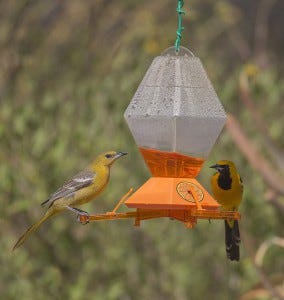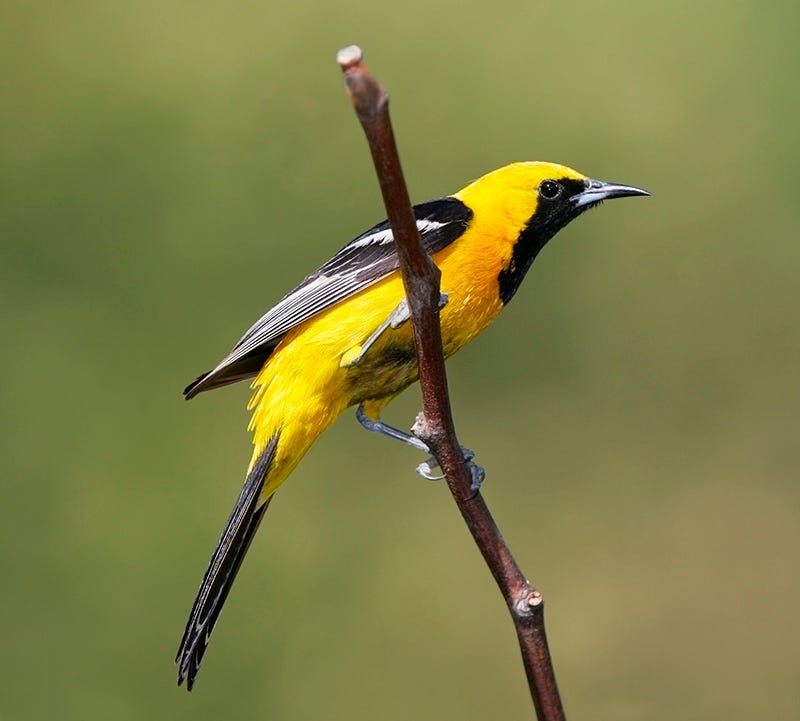
The flowers are in bloom and soon orioles will grace gardens across the northern states with their vibrant orange feathers.
There are 5 main breeds of orioles in the United States: Baltimore and Orchard Orioles are found mostly in the North and Midwest; Bullock Orioles, found in the West; and the Scott’s and Hooded Orioles, found in the South and Southwest.
As with other birds, orioles migrate south once the temperature begins to decline in the winter. Around April and May, when the Northern U.S. begins to warm, the orioles return to breed. As they make the long, difficult journey north, they’ll be looking for a place that offers plentiful food and a good nesting spot. If an oriole finds no suitable food in your backyard, the likelihood it will return is relatively small. Fortunately, if you prepare your yard for their arrival with an oriole feeder, they may opt to stay for the spring and summer seasons.
What They Like to Eat

Like hummingbirds, orioles have a sweet tooth. In particular, most orioles enjoy sugary foods such as oranges and fruit jellies. Many people who see orioles in their backyard year-after-year swear by grape jelly, while others are convinced that slices of oranges are enough to keep the birds happy. In any case, a combination of these two treats is sure to keep the orioles in your area satisfied.
To help you remember what orioles like, just think of orange. They have orange feathers, they like the color orange, and they love the taste of oranges. The Perky-Pet® Oriole Feeder - 24 oz Nectar Capacity, which is bright orange, is specifically designed with orioles in mind. It provides flavored nectar formulated just for orioles. The color also helps them see the feeder from great heights as it reminds them of their favorite fruit.
Another option is the Perky-Pet® Oriole Jelly Feeder, which dispenses jelly to hungry birds. The feeder comes with a reusable jar you can fill with your own jelly. Alternatively, the tray also allows you to screw on most standard store-bought jelly jars.
Keeping the Pests at Bay
Since orioles like to feast on sweets, there is always the chance that bees, flies, and other pests will find your feeder first. Do not spray pesticides on the feeder.
Helping Orioles Thrive
If you want to keep your orioles really happy, consider leaving out material they can use to make a nest. Orioles make intricately weaved nests, so by leaving small pieces of twine, yarn, or thread you can help aid them in creating their home.
The orioles don’t stay in the North very long, leaving around August, but keep these tips in mind and you may be able to watch them on nice, warm summer afternoons.

The Hooded Oriole earned a place on the Perky-Pet® Top 15 Photogenic Birds list for its striking beauty. Check out the interactive list of bird facts and photos.







